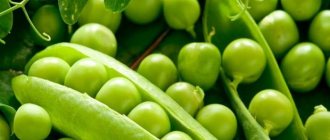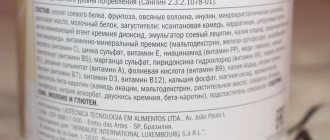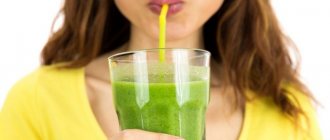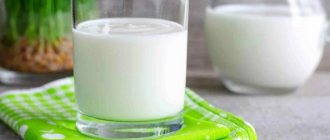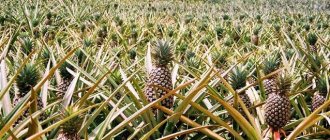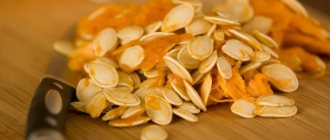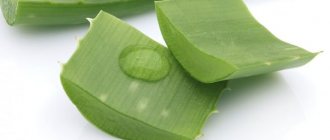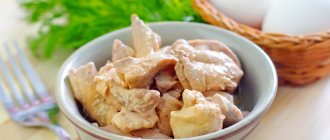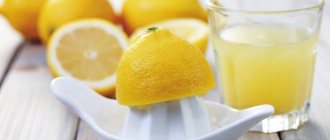≡ Home → Aloe → Types of aloe →
Aloe vera is a succulent plant that is grown at home for decorative and medicinal purposes, as well as on an industrial scale for the production of medicines and cosmetics. Its leaves contain more than 200 different substances, including vitamins and microelements, due to which it is considered very useful.
Young aloe vera bushes
The juice and extract of the plant are used in both folk and traditional medicine, but the indications for use vary significantly. Qualified doctors prescribe aloe preparations for wounds, minor burns and some skin diseases, but mainly in complex therapy. It is recommended to take the drug orally rarely and only as a laxative.
At the same time, aloe is used much more often in folk medicine. The drugs are used externally, taken orally, and even injected. With the help of aloe, diseases of the eyes, internal organs and general pathologies are treated. The product is especially popular in cosmetology. It is used to moisturize and nourish the skin, eliminate rashes and other defects.
Scientific research has shown that the properties of aloe are greatly overestimated by people, although in some cases it is quite an effective remedy.
What does aloe vera look like?
In the scientific literature, aloe vera is called true or Barbadensis Miller. This is one of the most common and medically valuable types of aloe. It looks like this:
Aloe vera has a herbaceous form. It has a shortened stem, almost invisible under the large fleshy leaves, which gather in dense leafy rosettes at its very base. The height of the plant and its diameter can reach 60-70 cm. As a rule, aloe grows to large sizes only in natural conditions and when grown in open ground, while in indoor plants the diameter of leaf rosettes rarely exceeds 30-40 cm.
Aloe vera leaves have a lanceolate shape and a fleshy texture. Inside they are divided into small cells, allowing them to retain a large amount of moisture, and on top they are covered with a dense peel. During periods of drought, its pores narrow, which prevents the evaporation of liquid. The surface of the leaves is smooth, but along the contour they are covered with sharp spines. The color is in most cases gray-green, but sometimes under the influence of the sun it can turn pale pink. This occurs mainly in wild species.
During flowering, a single peduncle, up to 50-70 cm high, grows from the center of the leaf rosette. At its top, a light green bud is first formed, which is very reminiscent of a cone. When it begins to bloom, a spear-shaped inflorescence appears. It consists of large tubular flowers, about 3-4 cm long and up to 1.5 cm in diameter. Their colors vary: there are flowers of yellow, orange, red and mixed shades. They do not bloom immediately, but gradually. The lower flowers open first, then the middle ones, and then the upper ones. Thanks to this, flowering lasts for 1-2 months.
An aloe vera inflorescence looks like this:
Biology of the species
The natural range of aloe vera remains unclear. The plant was introduced to many countries, where it successfully took root. Today it is cultivated on plantations in different parts of the world, and grown at home almost everywhere.
In the wild, the plant is distributed in the coastal regions of Africa, mainly northeastern. It is also found in the Arabian Peninsula, Canary Islands and Madeira.
Aloe vera as a street plant in Dubrovnik, Croatia
Aloe vera grows in hot, dry climates that are unfavorable to most other plant species. It is found on sandy and rocky soil in deserts, semi-deserts and mountains. The succulent is adapted to high temperatures and long periods of drought. It can go without watering or rain for about 2-3 months.
During the spring and summer, aloe vera grows actively, and in the fall and winter it begins a dormant period. It ends with a new flowering, which occurs in March-April. Due to the gradual opening of flowers, it lasts about one and a half months.
After flowering ends, an achene with small dark brown seeds is formed on the peduncle. With their help, aloe spreads in natural conditions. The plant also reproduces using basal shoots that appear in early summer.
Features of growing aloe vera at home
At home, aloe vera is grown mainly from root shoots and cuttings, which are rooted in sand or a special substrate. Seeds are also sometimes used.
Aloe vera is considered one of the least demanding plants. It takes root well in different conditions and does not require special care. To grow it, use a substrate for succulents, which is sold in flower shops, or self-prepared soil from a mixture of turf and leaf soil with sand. The soil is made loose so that it allows air to pass through and does not retain water.
The flowerpot is selected according to the size of the roots and the diameter of the leaf rosette. The roots should be placed in the flowerpot at a distance of 3-4 cm from its walls. In this case, the diameter of the pot must be no less than the leaves, otherwise they will begin to hang down and the plant will lose its decorative appearance.
It’s time to transplant the plant from this pot into a larger one.
The frequency of watering your succulent varies depending on the season. In the warm season, it is watered 2-3 times a month, and in the cold season - once every 3-4 weeks. During flowering, watering can be increased up to once a week.
You can fertilize the plant during the period of active growth. To do this, use liquid mineral fertilizers or folk remedies.
On a note
Before watering aloe vera, be sure to check that the top layer of soil is thoroughly dry. If you flood a plant, its roots will begin to quickly deteriorate, and the leaves, starting from the tips, will darken and dry out and wither. In this case, the only way to save the flower is by transplanting it.
Recipes for using aloe
Here are a few recipes using aloe juice for various diseases:
- for inflammation of the gums, 100 g of ground leaves are left for an hour in a tightly closed jar, filtered, and used to rinse the mouth;
- for chronic constipation, 150 g of finely chopped leaves without thorns are mixed with 300 g of heated honey, left for 24 hours. Drink a teaspoon an hour before breakfast;
- for diseases of the stomach or intestines, you need to prepare a medicine from: 15 g of agave juice, honey, melted goose fat, cocoa (100 g of each ingredient). The mixture is taken on an empty stomach 2-3 times a day, adding a tablespoon of the mixture to 200 ml of warm milk.
Diabetic patients are recommended to drink a teaspoon of plant extract three times a day (before meals). To make the bitterness less noticeable, it can be diluted with water.
Aloe with honey
The combination of agave with honey is one of the most common in recipes for a wide variety of disorders in the body. The fact is that these two components enhance the healing effects of each other, and the benefits of aloe juice increase. Several options for aloe-honey cosmetics and medicines have already been given above. In addition, these ingredients can be used to prepare excellent preparations to strengthen the immune system:
- Grind half a kilogram of agave leaves in a meat grinder with the same amount of walnuts, pour in one and a half glasses of honey. Eat a tablespoon three times a day after meals;
- mix until smooth 3 tbsp. plant juice, 100 g butter, 5 tbsp. cocoa, a third of a glass of honey. The medicine should be taken by dissolving a tablespoon of the product in a glass of heated milk, in small sips.
It should be borne in mind that the mixtures consist of very aggressive components, so the duration of a continuous course should not exceed 30 days.
For sore throat
In the process of treating a sore throat, regular treatment of the tonsils is important. To do this, use agave-based products.
You can prepare them like this:
- dilute the aloe extract with warm water (1:1 ratio), gargle with the resulting solution three to five times daily;
- drink 200 ml of warmed milk three times a day with the addition of 1 tsp. plant juice;
- take one part juice, two parts honey, three parts vodka. Making compresses with this remedy will speed up the cessation of the inflammatory process;
- add the same amount of water to a tablespoon of squeeze, 1 tsp. soda, 2 drops of iodine. Mix well and gargle. Instead of water, you can pour chamomile or sage infusions;
- It’s good to drink a quarter glass of rosehip infusion with the addition of aloe before meals.
If the disease is protracted, the following procedure will shorten the recovery time: cut a piece of leaf daily, peel it, hold it on your cheek (the longer the better).
Aloe tincture
To prepare aloe tincture, not only the leaves, but also the stems are used:
- After cutting, keep parts of the plant in the refrigerator for 10 days.
- Grind well.
- Pour a solution of medical alcohol (70%) in a ratio of 1:5.
- Close tightly.
- Place in a cool, dark place for 10 days.
The finished drink is taken before breakfast and dinner, one teaspoon at a time.
Bronchial asthma bronchitis
For bronchopulmonary diseases, the following folk remedies are effective:
- for bronchitis you need to pour 350 g of crushed agave leaves with three tablespoons of pure alcohol, add 750 g of red wine, mix. Adults drink a tablespoon half an hour before meals, children over 5 years old - a teaspoon;
- for bronchial asthma, a kilogram of oat grains should be boiled over low heat for 2.5 hours in two liters of water, add ground leaves and honey (100 g each). Drink a tablespoon in the morning;
- take 200 g of agave, radish, and potato marc. Add 200 g of honey, leave for three days in the dark (shake the jar with the mixture periodically). Drink a tablespoon three times a day.
The listed drugs reduce the frequency of attacks, facilitate the discharge of sputum, and serve as an excellent means of preventing exacerbations.
Medicinal properties of aloe vera
Scientists have found that aloe vera leaves contain about 200 biologically active components. They contain resinous substances, polysaccharides, organic acids, phenols, phytoncides, aloin, allontoin, essential oils, vitamins C, E and group B, as well as other substances. The amount of individual components in the leaves varies greatly. Some of them are contained in small doses.
Aloe vera juice is the main accumulator of biologically active substances and the main medicine in folk medicine.
Thanks to the extensive chemical composition of aloe vera, people attribute many beneficial properties to it. However, as a result of scientific research and clinical trials of drugs, only some of them were confirmed.
When used externally, aloe vera has been proven to provide:
- Regenerating effect;
- Anti-inflammatory;
- Antibacterial;
- Anesthetic.
This justifies the use of the product on the skin and occasionally on the mucous membranes of the mouth and throat. Aloe vera promotes healing of skin after wounds, sun and radiation burns, and other damage. The drug stimulates the formation of fibroblasts in injured areas of the skin, due to which the healing process occurs several times faster.
On a note
The wound healing effect of aloe was first officially confirmed in 1984. Then the director of the North Texas Scientific Laboratory, I.E. Danhof conducted a study which found that under the influence of aloe vera-based preparations, human skin heals 4-6 times faster after wounds and burns.
The antibacterial properties of aloe vera have also been confirmed. It manifests itself when used externally and only against staphylococcus, streptococcus and some enterobacteria. In 2021, Israeli specialists conducted a clinical trial of the drug and found that its effectiveness against enterobacteriaceae is not inferior to that of cephalosporin antibiotics.
A Petri dish with a colony of enterobacteria on which the bactericidal properties of aloe vera juice are tested
Aloe vera also has an anti-inflammatory effect. It suppresses inflammation on the skin, helps reduce redness and swelling. The product reduces irritation and rashes. In addition, it provides a mild analgesic effect.
It is also useful to read: Details about variegated aloe (tiger)
When used internally, these properties of aloe do not appear. His drugs:
- Have a laxative effect;
- Slightly increase the acidity of gastric juice;
- Stimulate bile formation;
- Slightly increases appetite.
All effects, except for the laxative, are very weak. Because of this, in traditional medicine the drug is not used to increase acidity or remove bile. It is used to relieve constipation, but is now quite rare. The drug gradually increases intestinal motility, due to which approximately 10 hours after its administration, emptying occurs.
Despite the fact that the properties of aloe vera and its effect on the human body have been studied in dozens of scientific studies, people attribute many more effects to this remedy than have been confirmed. It is believed that it strengthens the immune system and increases resistance to infectious and viral diseases. It is used for preventive purposes and to increase overall tone and vitality.
It is also believed that aloe vera’s antibacterial, anti-inflammatory and regenerating properties also occur when taken orally. Because of this, the drug is taken for pathologies of internal organs and general diseases. A very common myth is that aloe treats gastritis and ulcers by ensuring healing of the mucous membranes of the stomach and intestines.
In some traditional medicine reference books you can read that aloe vera also has antiviral and antifungal properties. He is credited with the ability to cure almost all diseases and is often called the immortelle. True, although aloe vera has certain healing effects, it is not a panacea. All effects that have not been scientifically proven remain speculative. The product continues to be used, relying on them, but there is no data on effectiveness.
On a note
The external difference between aloe vera and agave is very large, however, the differences in the chemical composition and properties are minimal. In medicine, these plants are considered interchangeable, since their therapeutic effectiveness does not differ.
On the left is aloe vera (young bush), on the right is aloe vera (adult plant)
Determination of the therapeutic effect of aloe vera gel on recurrent aphthous stomatitis
Recurrent aphthous stomatitis (RAS) is one of the most common lesions of the oral mucosa, occurring with an incidence of 5-50% depending on the population. This disease is characterized by the formation of recurrent and spontaneously healing ulcers, which mainly affect the lips, soft palate and pharynx in childhood and young adulthood. The incidence of ASD varies with age and is slightly more common in women than in men. The disease is accompanied not only by painful symptoms, but can also sharply reduce the patient’s quality of life, disrupting the normal act of swallowing, food intake, liquids and even speech. The histopathological picture of ASD is still not clearly understood, so the treatment of this pathology varies greatly, and due to the recurrent course of stomatitis, conducting double-blind clinical trials of new drugs is very difficult. A wide range of drugs (mostly applied topically, such as chlorhexidine, cyclosporine, levamisole, steroids, sucralfate, tetracycline) have shown partial effectiveness in alleviating symptoms and shortening the duration of the disease.
Natural products, especially herbal preparations, deserve great attention, since their use is rarely accompanied by any side effects.
Aloe Vera (AV) is a tropical plant native to northern Africa and much of Asia, with fleshy and succulent leaves that have been used for thousands of years in herbal medicine. Recent studies of a gel made from AB leaves have shown its high effectiveness in the treatment of a wide range of inflammatory diseases, including the treatment of various types of wounds. The clear gel produced from AB leaves contains many natural ingredients with wound-healing properties, making it particularly suitable for the treatment of ASD.
This study was conducted to determine the effectiveness of AB gel in relieving symptoms of ASD and reducing the duration of the disease.
Materials and methods
Patients who underwent the study
A group of patients seeking help at our dental clinic was selected and gave written consent to participate in a double-blind clinical trial from April 2010 to February 2011. Forty patients aged 15 to 35 years with single lesions on the mucous membrane of the cheeks and lips that appeared within the last two days (diagnosis: recurrent aphthous stomatitis) and in the absence of any other diseases, randomly received either AB gel or placebo. Patients with systemic diseases, large aphthae, lesions localized outside the mucous membrane of the cheeks and lips, as well as pregnant women and smokers were excluded from the study.
Gel preparation and application
Freshly obtained AB leaf juice extract (supplied by Barij-Essence Co., Tehran-Iran), with a solids content of 1.6% and a density of 1.01 g/ml, was used to prepare a 2% sterile lubricant oral gel (CMC- based, Farayand-Nik Co., Iran). A 2% saline lubricant was used as a placebo. Both AB gel and placebo were aseptically packaged in 50 ml tubes for easy application to affected areas three times daily for 10 days. Equal numbers of AB and placebo gel containers were made and then each was labeled with a code. It is recommended to avoid eating and drinking liquids for at least half an hour after applying the gel.
Clinical observation and assessment of pain symptoms
Damage to the mucous membrane was observed on days 0 (before the start of the study), 3, 7 and 10. Using a metal compass, the diameter of the afts and their inflammatory rim were measured. Patients were also trained to rate their pain symptoms daily using a special scale by irritating the mucous membrane with orange juice. Subjects with a pain score of 1 and an aphthae diameter of less than 1 mm were considered cured.
Statistical analysis
At the end of the study, after decoding the containers, data on pain scores, disease duration, aphthae and inflammatory rim diameters were compared between the two groups using Fisher's exact test or Student's t test. A p value <0.05 was considered statistically significant.
results
Of the 87 patients who presented to the clinic with aphthous lesions of the oral mucosa, only 49 people met all established criteria, however, only 40 subjects successfully completed participation in the study (5 patients refused to give written consent and 4 patients stopped treatment by the fifth day without good reasons). Container decoding revealed that 20 subjects in both the AB gel and placebo groups successfully completed the study. The ratio of women to men in the group using AB gel was 10:10, and in the control group (placebo) was 8:12, which was not statistically significant (P>0.05). Also, the average age in the group with AB gel (27+-7.96 years) practically did not differ from the average age of the control group (29.25+-7.48 years) (P>0.05).
The time until the pain syndrome (scale <2) and aphthae themselves (diameter <1 mm) disappeared in the group using AB gel was significantly shorter than in the control group (P<=0.05; Table 1). Also, the severity of pain after the 4th day of application was noticeably less in patients in the AB gel group than in the placebo group (Graph 1). Pain syndrome and aphthae damage by the 10th day of the study, according to patient reports, were considered cured in both the AB gel group and the control group. The diameter of the lesions and inflammatory rim after days 3 and 7 of the study was significantly smaller in the AB gel group than in the placebo group (Table 1).
Table 1: Mean values of aft diameter and inflammatory rim in patients with ASD after application of AB gel and after application of placebo gel.
| Group | Day 0 | Day 3 | Day 7 | Day 10 | ||||
| Aphtha diameter | Flash diameter rim | Aphtha diameter | Flash diameter rim | Aphtha diameter | Flash diameter rim | Aphtha diameter | Flash diameter rim | |
| AB gel | 2,5+-0,66 | 3,9+-1,00 | 2,2+-0,64 | 3,1+-0,97 | 1,3+-0,66 | 1,4+-1,05 | <1 | No |
| Placebo | 2,7+-0,82 | 4,1+-1,02 | 2,1+-0,84 | 3,7+-0,93 | 0,6+-0,69 | 2,1+-0,97 | <1 | No |
| p | 0,615 | 0,525 | 0,556 | 0,044 | 0,003 | 0,001 | — | — |
Discussion
The use of AB-based gel as a wound-healing, antimicrobial and anti-inflammatory agent has been known since ancient times. Recurrent aphthous stomatitis is a common ulcerative disease of the oral mucosa, the histopathological features of which still remain unclear. The inflammatory process and pain syndrome, which significantly reduce the quality of life of patients (impairing food intake, liquids and even speech), are two main criteria for diagnosing ASD, a unified standard of treatment for which has not yet been adopted. Various drugs, including those of herbal origin, have been found effective after their systemic or topical application. At this stage, scientists are trying to select effective drugs, as well as establish the essence of the pathophysiological process of ASD. In this study, we established the therapeutic potential of an AB-based gel in the treatment of ASD, which was found to be effective in relieving pain and reducing the diameter of lesions compared to the control group (placebo).
The use of the same number of coded containers of AB gel and placebo gel, which were randomly assigned to selected patients, allowed for a double-blind and at the same time randomized study. To avoid side effects on the pathophysiology of ASD, the range of patients studied was limited to the age of 15-35 years, as well as the localization of minor lesions on the cheeks and lips. In addition, aphthae that appeared only within the last 48 hours were taken into account.
All other patients suffering from diabetes, smokers, with a burdened allergic history, systemic diseases, extensive damage to the RAS and the herpetic nature of the lesions were excluded from the study. When randomly assigned to groups, mean age and gender composition were not statistically significant.
The reduction in pain in patients applying AB gel (Graph 1), which was observed after just a few days of treatment, can be explained by the anti-inflammatory properties of Aloe Vera (Table 1 and Graph 1). This effect was observed in the experimental group after the third day of therapy. Also, the anti-inflammatory effect of Aloe Vera has been established in several other diseases by previous researchers. In addition to this property, Aloe Vera contains antioxidant substances (flavonoids, saponins, sterols, terpenoids).
The use of anti-inflammatory drugs for diseases of the oral mucosa, including RAS, is basic in dentistry.
Graph 1: Indicators of pain syndrome in points when treating ASD with AB gel or placebo gel. The score shows the average pain score of all 20 patients on each treatment day.
Polysaccharides in the AB gel, which have immunomodulatory and anti-inflammatory properties, could also have a beneficial effect on the healing of lesions. Moreover, the antioxidant components of AB gel inhibit the production of prostaglandin E2 and interleukin-8, which has a positive effect on the therapeutic effect.
Treatment of wounds with AB gel was proposed after studies in other pathologies such as skin damage, burns, colorectal inflammation, cancer and infections. The pathophysiology of ASD remains unclear, however, the therapeutic effectiveness of all drugs with anti-inflammatory effects has been established. Some gastrointestinal disorders, apparently due to immunological pathology, for example, inflammatory bowel diseases, as well as lichen planus, can be accompanied by the formation of ulcers on the oral mucosa.
AB gel was effective in the treatment of lichen planus of the oral mucosa. In the mentioned case, AB gel was applied topically for 8 weeks, and complete remission was observed in 7% of cases. However, more than 81% of all patients overall noticed a beneficial effect of the gel. In other studies, AB showed high effectiveness in healing radiation ulcers of the oral mucosa, by increasing TGF-B-1 and producing bFGF. The mechanism of this effect is not clear, however, the possibility of the participation of antioxidant components of the gel is assumed.
Based on the results obtained, we can conclude that the wound healing effect of AB gel (assessed by the diameter of the aft) is slightly lower than the anti-inflammatory effect (Table 1). However, in general, the effect of AB gel on the treatment of ASD was found to be therapeutically effective, since the recovery time with the use of the drug was reduced to 7 days.
Authors: Neda Babaee , Dental Research Center, Department of Dental Diseases and Diagnostics, School of Dentistry, Babol Medical University, Iran Ebrahim Zabini , Dental Research Center, Cellular and Molecular Biology Research Center, Department of Pharmacology and Physiology, School of Dentistry, Babol Medical University, Iran Saman Mohseni , Dental Research Center, Department of Dental Diseases and Diagnostics, School of Dentistry, Babol Medical University, Iran Ali Akbar Moghadamnia , Department of Pharmacology and Physiology, School of Dentistry, Babol Medical University, Iran
In what cases are such drugs prescribed?
In traditional medicine, only drugs with proven effectiveness are used. Accordingly, aloe vera is used for its effects, which have been confirmed.
The drug is prescribed for:
- Minor skin damage (abrasions, scratches and cuts);
- Sun and radiation burns of 1st and 2nd degree, as well as for their prevention;
- Chapping and frostbite of the skin;
- Allergic irritation and insect bites;
- Some skin diseases.
Most often, the drug is used to heal the skin after cuts, minor burns and chapping in the cold. It is also used to reduce skin redness caused by an allergic reaction or insect bite. In this case, it is used as an adjuvant, as well as for dermatological diseases.
Internal use of aloe vera is rarely practiced in traditional medicine. Previously, it was often used as a laxative, but after the emergence of evidence of numerous side effects, the situation has changed. For example, the US Food and Drug Administration completely banned the production of the drug.
Dietary supplement based on aloe vera extract
In folk medicine, aloe vera is used much more often. It is used externally and internally to treat:
- Skin diseases, including herpes, psoriasis and eczema;
- Diseases of blood vessels and joints;
- Varicose veins on the legs;
- Eye pathologies such as conjunctivitis, cataracts and others;
- Runny nose and sore throat;
- Bronchitis, inflammation and even pulmonary tuberculosis;
- Gastritis and ulcers of the stomach and duodenum;
- Pancreatitis;
- Gynecological pathologies;
- Diabetes mellitus;
- Cancer and others.
People use the juice and pulp of aloe vera to make medicines to treat a variety of pathologies. How they are used also varies. For example, for eye diseases and women's diseases, injections are given with a plant extract. They are not used in traditional medicine due to lack of effectiveness and a high risk of side effects.
The effectiveness of aloe vera for external and internal use
Aloe vera preparations are effective for minor skin damage resulting from scratches, cuts and burns. The product accelerates tissue healing, reduces inflammation and has an antibacterial effect against several strains of bacteria. However, in case of severe inflammation, bacterial infection or fungus, its effectiveness is insufficient.
Aloe does not cure skin diseases. It is prescribed in complex therapy mainly to reduce peeling and heal the skin. Also, this remedy cannot eliminate an allergic reaction. It does not have such a property.
Due to the large number of biologically active components, aloe juice itself can cause severe allergies.
When taken internally, aloe vera has only a laxative effect. The choleretic effect and increased stomach acidity appear slightly. Other properties of the drug have not been scientifically confirmed. Accordingly, it is impossible to cure any serious disease with its help.
Aloe in gynecology
Agave significantly speeds up the healing process for a number of women's health problems.
Aloe injections are used in complex therapy of diseases such as:
- ovarian cystosis;
- chlamydia;
- cervical erosion;
- adnexitis;
- inflammation of the appendages;
- ureaplasmosis;
- various forms of infertility;
- microplasmosis;
- obstruction of pipes.
The injectable drug is injected into the muscle (thigh or buttocks). The usual course duration is 10 days (from 1 to 4 ml daily). The maximum number of injections is 50.
Attention: agave injections complement the conservative therapeutic course, and do not replace it!
The plant helps destroy harmful microorganisms, activates the immune system, and accelerates cellular regeneration.
In gynecology, in addition to injections, aloe is used as a solution for soaking tampons or douching. Other beneficial ingredients are added to such products. You can make the solution at home. To do this, dissolve 2 tablespoons of aloe juice and a pinch of turmeric in a liter of water. Douche with the resulting mixture 3-4 times a day for four days.
You can cope with vaginitis that appears due to non-compliance with hygiene rules, hormonal changes or infection with the help of honey-aloe tincture.
It is prepared as follows:
- Brew dried chamomile and sea buckthorn (2 tbsp each).
- Mix 3 tbsp. aloe juice, 2 tsp. honey, 2 tbsp. vodka.
- Combine both mixtures.
- Insist for three days.
- Drink the tincture three times a day, 1 tbsp.
If uterine fibroids are diagnosed, take a tablespoon of syrup twice a day. To prepare it, simmer a solution of: half a liter of red wine, 2 tbsp. in a steam bath for 60 minutes. roots of the initial letter, 2 tbsp. aloe juice The course of treatment is two weeks.
If you have menstrual irregularities or painful periods, you can suck on pieces of sugar after dropping the plant juice on it (about 10 drops per piece). For mastitis, it is good to make compresses from ground leaves.
Features of the use of drugs in traditional medicine
In folk medicine, aloe vera is used quite often. There are many recipes for medicines based on it and methods for their use. For skin diseases, use whole leaves of the plant, their pulp and juice. They are most often used to make lotions and compresses. To treat sore throat, rinse solutions based on juice or extract are prepared. To cure a runny nose, drops are used. They are also used for inflammatory eye diseases.
Internal use of aloe is very popular. Its juice is drunk to improve immunity, treat colds and flu, diseases of the gastrointestinal tract and respiratory system. It is believed that the product treats inflammatory diseases, has an antibacterial and regenerating effect. In fact, when taken orally, such properties do not appear, and the drug does not help cure these pathologies.
Practice shows that aloe juice cannot cure any serious disease.
To treat complex diseases of internal organs, injections are also given. Doctors of traditional medicine do not prescribe them, but the popularity of the procedure among the people does not decrease, despite its pain and ineffectiveness. Injections are carried out for deterioration of vision, clouding of the vitreous body and other eye pathologies, as well as for gastritis and ulcers, adhesions in the fallopian tubes in women, fibroids and other diseases in gynecology. In addition, injections are made for bronchitis and pneumonia, prostatitis, potency disorders, cancer and many other diseases.
On a note
It is believed that an extract from biostimulated aloe leaves triggers a number of processes in the human body aimed at self-healing and healing. This theory was put forward in the 50s of the last century by ophthalmologist V.P. Filatov. Experimentally, he discovered that so-called biostimulants are synthesized in the leaves of aloe, placed for some time in low temperature conditions. They enhance all the vital functions of the plant and prevent it from dying. The scientist suggested that they would also act on the human body.
Further research showed that this theory is false and plant biostimulants are ineffective. The scientist’s discovery did not find practical application, but thanks to his theory, the popularity of the remedy among the people increased greatly.
It is also useful to read: Aloe vera as a houseplant and home remedy
The use of aloe vera in cosmetology
Aloe vera is a popular component of cosmetics for facial and body skin care, as well as shampoos and hair conditioners. Many well-known companies add it to their products, such as Oriflame, Avon, L'Oreal and others.
In cosmetology, aloe vera is used to moisturize and nourish the skin, increase its elasticity and rejuvenation, prevent wrinkles, eliminate acne and obtain some other effects. By adding the juice or extract of this plant to a cream, tonic, soap, peeling or other product, manufacturers attribute all these properties to them. However, most of them remain unconfirmed.
Very popular shower gel from Aloe-Aloe
All cosmetic effects of the drug are based on its three main properties, which manifest themselves when used externally. Thanks to them, aloe vera provides:
- Moisturizing the top layer of skin;
- Healing of small wounds and scratches;
- Skin restoration after sunburn;
- Reduced redness;
- Elimination of peeling and irritation;
- Reducing rashes.
The product helps reduce the number of acne due to its antiseptic and anti-inflammatory effects, but does not completely eliminate them. It also soothes and restores skin after sunbathing, which is why it is often added to panthenol-based sprays. Aloe also reduces inflammation and accelerates healing of the mucous membranes of the mouth and throat, so it is even added to toothpastes.
What does it help with?
As mentioned above, agave pulp is used as a medicine and as a cosmetic product. Let's take a closer look at what aloe juice helps with.
What does it cure?
This gift of nature can be called a panacea, because... The list of healing qualities is quite extensive.
List of things that aloe juice treats:
- regulates metabolism;
- saturates the body with vitamins and biologically active substances, strengthens the immune system;
- eliminates constipation;
- helps with gastrointestinal diseases;
The substance is used as a prophylactic and tonic.
Application in cosmetology
Aloe juice has found wide application in cosmetology.
In industrial conditions, it is introduced into cosmetic preparations in the form of an extract. They are used to care for problem skin. In addition, creams with aloe rejuvenate and whiten. Aloe vera gel in cosmetology. Hair products are very popular. Shampoos and balms improve the quality of hair follicles, reduce the formation of dandruff, moisturize the scalp, and add shine to the hair. Soaps, shower gels, body lotions soothe inflamed skin and reduce dryness. Hygienic lipstick eliminates chapped lips and softens them.
Self-produced aloe juice has positive reviews for use in skin and hair care. At home, you can freeze ice cubes with its additives and wipe your face with them. You can also wipe the skin with a cut of an agave leaf. It is good to rub the pulp of the leaves into the scalp: this will give your hair shine.
The homeland of aloe, plant propagation rules and selection of suitable soil for replanting.
Contraindications and possible side effects
You should not apply aloe vera preparations to the skin or drip it into your nose unless you are allergic to this plant. There are much more contraindications to the internal intake of drinking concentrates, syrups, teas, dietary supplements and other products.
One of the aloe vera-based drugs is prohibited for use for gastritis.
Aloe vera is contraindicated for:
- Complex cardiovascular diseases;
- Functional and inflammatory diseases of the kidneys and intestines;
- Diseases of the gallbladder and bile ducts;
- Oncological pathologies;
- Gastritis with high acidity;
- Diarrhea;
- Hemorrhoids;
- Abdominal pain, the cause of which has not been established;
- Bleeding;
- Pregnancy and lactation;
- Children under 12 years of age.
It is noteworthy that these contraindications are listed only in the instructions for liquid aloe extract, which is sold in pharmacies, as well as in medical reference books. In the description of tablets and capsules that are classified as dietary supplements, they are most often not indicated. For example, in Solgar and Forever brand drugs, only allergies are listed as contraindications.
For this dietary supplement, the instructions list only allergies as a contraindication.
The use of the drug, despite existing contraindications, can lead to serious complications. Cases have been recorded where aloe provoked inflammatory changes in the intestines, increased blood pressure, increased bleeding, diarrhea and other side effects. It is also thought to cause uterine contractions and cause miscarriage or premature birth.
Also, when treating aloe vera, you need to take into account the real effectiveness of the product. When used instead of properly selected and effective therapy, diseases can progress, worsen and enter the chronic stage.
Contraindications and harm of Aloe Vera
It is prohibited to use the medicinal plant for the following conditions:
- Severe kidney pathologies.
- Diseases of the pancreas and gall bladder.
- Cystitis.
- Intestinal obstruction of various origins.
- Individual intolerance to the drug.
- Haemorrhoids.
- Bleeding from the pelvic organs.
Frequent and prolonged use of the product can lead to the leaching of chemical elements, in particular potassium.
Is it possible to eat aloe vera
Aloe vera leaves are added to salads and used as a side dish for meat and fish dishes. They have a bitter smell and taste, but many people like them. They are eaten mainly to saturate the body with vitamins and other beneficial substances contained in them, and as a result, to strengthen the immune system and increase overall tone. Aloe leaves are also included in weight loss diets. It is believed that the plant helps cleanse the body of toxins and waste.
Expert opinions on the safety of eating aloe vera vary. Some sources write that it can provoke the development of cancer, and this is indeed true. The peel of the plant contains aloin, a substance that becomes carcinogenic in large doses. This has been confirmed in animal studies. In 2013, it was found that aloin causes the development of gastric hyperplasia and colon cancer in rodents. Based on such data, the International Agency for Research on Cancer has listed aloe whole leaf extract as a possible human carcinogen.
If aloe were not carcinogenic, it would be an excellent source of food - each leaf is very juicy and massive.
Eating aloe vera, as well as drinking its juice, is possible if there are no contraindications. The dangerous substance is contained only in the peel of the plant, but is absent in its pulp, so it is recommended to peel the leaves before consuming them.
What are the benefits of aloe vera juice?
This is an invaluable medicinal plant containing about twenty minerals, including manganese, potassium and calcium, zinc, chromium and magnesium. In addition, aloe vera juice is rich in vitamins A, C and E, B1, B2, B3, B6. The juice of this plant also contains 18 amino acids, including eight essential for the human body.
The plant also contains fatty acids: palmitic, caprylic, linoleic, oleic and others, as well as three plant sterols that help reduce blood fat levels, which prevent the manifestation of allergy symptoms and prevent indigestion.
Agave is one of the best adaptogens, that is, it helps the body quickly adapt to environmental influences, heavy physical activity, severe emotional stress and resist all kinds of negative influences.
How to prepare preparations based on aloe
For medicinal use, the largest and fleshiest aloe vera leaves are chosen. It is believed that the plant must be more than 3 years old in order for a sufficient amount of useful substances to accumulate in it.
The selected leaves are cut as close to the stem as possible, after which they are washed and cleared of thorns and peel. As a result, stripes of translucent pulp remain. To make juice, it is cut into small pieces. Squeeze it out using gauze or a juicer.
Freshly cut leaves, leaf cut into pieces and ready-made aloe juice in a spoon
Some traditional medicine recipes are based on using aloe pulp directly. In these cases, it is cut into smaller pieces and lightly crushed until the juice is released. Also, other components are often added to medicines, for example, honey, Cahors, essential oils and herbal infusions.
How to use aloe vera
In folk medicine, there are many different recipes based on aloe vera and no less ways to use them. The drugs are applied to the skin and lotions and compresses are made with them, used as drops for the eyes and nose and solutions for rinsing the mouth and throat. They are also taken orally and injected, and for gynecological pathologies they are used as suppositories and tampons. This use of aloe vera is not practiced in traditional medicine.
For use on the skin, aloe juice and pulp are most often used, but sometimes whole leaves are used. For example, to draw out pus, they are cut in half and applied with the cut to the abscess.
Aloe vera juice or pulp and preparations based on them are also taken orally. For different diseases, the duration and dosage of medications vary. On average, it is recommended to drink the plant juice 1 teaspoon 2 or 3 times a day for a month. The course of treatment with injections is also long. They are carried out within 30-45 days.
Application of honey
[blok_5_h2] The combination of honey with aloe enhances the healing effects of the plant.
But since products with such components are very active, they can be used for no more than 1 month. If cold symptoms appear, treatment should last 5 days. The benefits of a mask with aloe and honey have been proven for the following symptoms:
- baldness;
- dandruff;
- hair loss.
To support the immune system, take the following compounds:
- ground plant leaves and walnuts;
- a glass of honey and aloe.
If a runny nose appears, use a medicinal flower in the form of drops.
The above components are mixed and infused for 3 days. Treatment is carried out three times a day. There are also contraindications, primarily an allergy to honey. You can boost your immunity by preparing the following mixture:
- aloe juice;
- cow butter;
- cocoa;
- honey.
After all the components are mixed, the medicine is consumed with milk.
For pulmonary disease, the plant is infused with red wine in alcohol. The medicine is stored in an enamel or glass container.
The plant extract is sold in pharmacies and is presented in the form of a transparent yellow or red liquid. The product is available in the form of injections, juice, tablets, syrup. The liquid product should be taken 5 ml 3 times a day. This therapy is indicated for anorexia and gastrointestinal pathologies. The tablets are taken three times a day 20 minutes before meals. If a subcutaneous injection is prescribed, it is administered to children under 5 years of age at a dosage of 0.2 ml, and to adults 1 ml.
Contraindications for use:
- diarrhea;
- allergy;
- high blood pressure.
Treatment for adults involves taking 1-2 tbsp. l. before meals, therapy for children over 5 years old, 1 tsp. tinctures.
